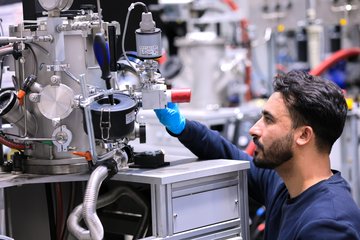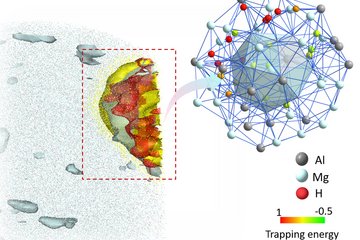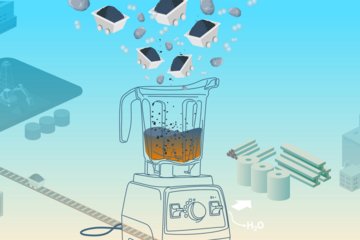The understanding of hydrogen induced failure in metals and alloys is one of the central and unresolved problems in Materials Science. By hydrogen embrittlement one understands the change of ductility of metals by the incorporation of hydrogen in the lattice, which can cause crack formation. Hereby, atomic hydrogen (which has dissociated before via chemcial reactions at the surfaces) invades into the metal and can recombine to molecular hydrogen at defects. This can lead to a pressure increase and allows cracks to grow from inside the material. Many steels suffer from hydrogen embrittlement; austenitic steels are less sensitive, but in particular high strength steels are often strongly affected. This issue has gained additional attention by the technological advances in fuel cells for automotive applications.
To to its complexiity, hydrogen embrittlement cannot be attributed to just one mechanism. Instead, during the past 100 years of research on this issue, several phenomena have been identified as key mechanisms for hydrogen induced material failure. In brief, important concepts in the room temperature regime are
- HEDE hydrogen enhanced decohesion
- HELP hydrogen enhanced localized plasticity
- Hydride phase formation and brittle fracture











